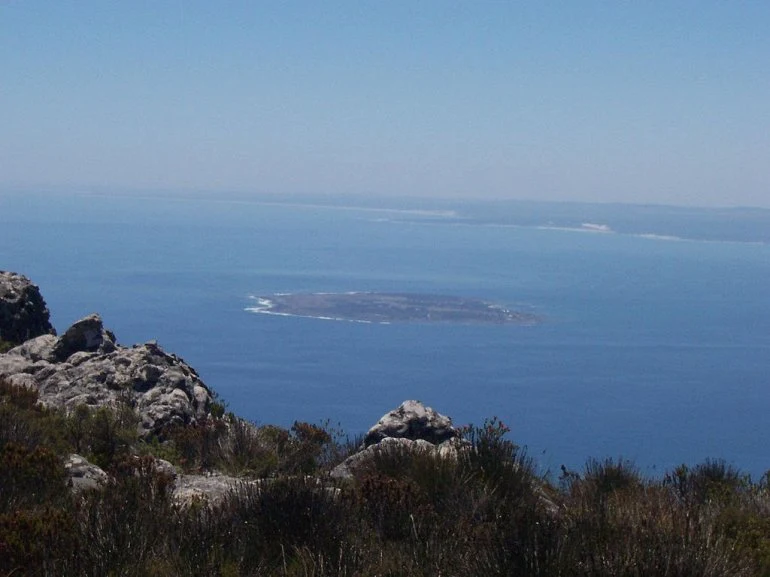Robben Island is located in Table Bay, 6.9 km west of the coast of Bluebergstrand, Cape Town. The name has Dutch roots and literally translates as the island of fur seals. But he was not famous for seals. During the brutal apartheid regime, it was a prison for especially important prisoners, including Nelson Mandella. In this article, you will learn about the history of Robben Island and its features.
 |
| Robben Island |
Robben Island is roughly oval in shape, 3.3 km long from north to south and 1.9 km wide, with an area of 5.08 km2. The flat island rises just a few meters above sea level and was formed by an ancient eruption. Nobel laureate and former South African President Nelson Mandela was imprisoned here for 18 years before the fall of the apartheid regime. To date, three former prisoners of Robben Island have become presidents of South Africa: Nelson Mandela, Kgalema Motlanthe, and Jacob Zuma. Robben Island is a South African National Heritage Site and a UNESCO World Heritage Site. Cape Town is one of the most beautiful cities in South Africa due to its natural beauty, but historical sites are also worth seeing.
 |
| Robben Island |
Since the end of the 17th century, Robben Island has been used to isolate mainly political prisoners. Dutch settlers were the first to use Robben Island as a prison. His first prisoner was Avshumato in the middle of the 17th century. Its early permanent residents included political leaders from various Dutch colonies, including Indonesia, as well as the leader of the rebellion on the slave ship Meermin. In 1806, Scottish whaler John Murray opened a whaling station in a sheltered bay on the northeastern coast of the island that became known as Murray Bay. After the failed uprising in Grahamstown in 1819, the British colonial government sentenced African leader Makanda Nxele to life on the island. He drowned on the shore of Stolovaya Bay after being released from prison.
 |
| Robben Island |
The island was also used as a leper station and an animal quarantine station. Beginning in 1845, lepers from the Hemel-en-Aarde (heaven and earth) colony near Caledon were transported to Robben Island. Initially, this was done on a voluntary basis, and lepers were free to leave the island if they so wished. In April 1891, the cornerstones were laid for 11 new buildings to house lepers. After the introduction in May 1892, the movement of the lepers was restricted. Until 1892, an average of about 25 lepers per year were admitted to Robben Island, but in 1892 this number increased to 338, and in 1893 another 250 were admitted.
 |
| Robben Island |
During World War II, the island was fortified and 12 and 6-inch cannons were installed as part of Cape Town's defensive perimeter. Since 1961, Robben Island has been used by the South African government as a prison for political prisoners and convicted criminals. In 1991, the maximum security prison for political prisoners was closed. Five years later, the mid-level prison for criminal inmates was closed.
 |
| Robben Island |
With the end of apartheid, the island became a popular tourist destination, akin to Alcatraz off the coast of San Francisco. It is operated by the Robben Island Museum (RIM). In 1999, the island was declared a World Heritage Site. Each year, thousands of visitors take a ferry from the V&A Waterfront in Cape Town for tours of the island and its former prison. Many of the guides are former prisoners. All land on the island belongs to the country of South Africa, with the exception of the island church. The island and museum are open all year round, weather permitting.
